Poor Quality Specimens
All specimens received at the newborn screening laboratory are examined for specimen acceptability. Poor quality specimens may not have enough blood to perform all the testing, may have been collected improperly, and or may have been delayed in the mail. When the Newborn Screening Laboratory determines a specimen to be poor quality, a same-day Fax report is sent to the collecting facility and physician of record. After being notified by fax that the sample is poor quality, it is imperative that arrangements are made to recollect the newborn screen as soon as possible so that there is no delay in follow-up for babies that may have an abnormal result.
Remember, if there is a question about suitability when collecting a specimen, it is best to start over and recollect another newborn screening specimen. Instead of discarding the “ruined” or poor quality specimen, write VOID across the front of the screening form and return it to the Newborn Screening Laboratory along with the “good” newborn screening sample. You will be credited for the VOIDED specimen form. By recollecting the baby’s blood immediately, you will provide a timely newborn screening result and avoid recalling the baby back after it has been discharged.
Examples of satisfactory and unsatisfactory blood spot specimens follow:
|
SATISFACTORY SPECIMEN: |
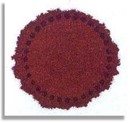
|
|
QUANTITY NOT SUFFICIENT: |

|
|
INCOMPLETE SATURATION: |
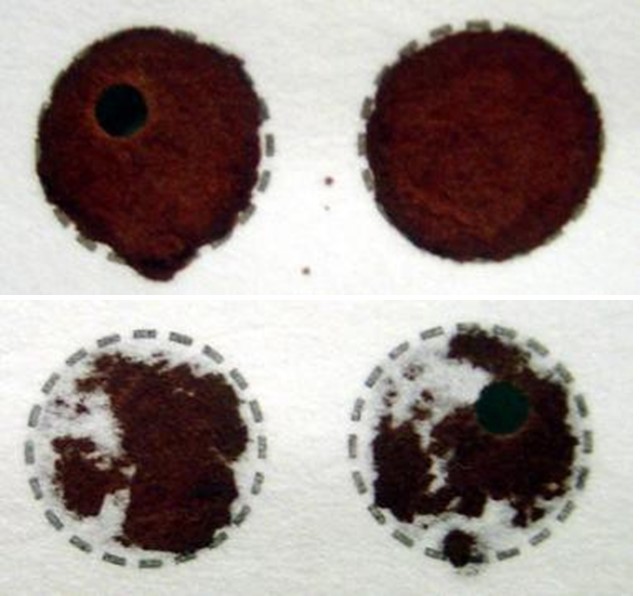
|
|
SPECIMEN ABRADED: |
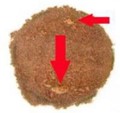
|
|
LAYERED, CLOTTED OR SUPERSATURATED: |
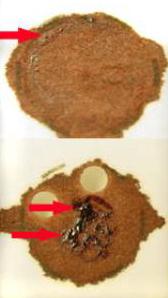

|
|
DILUTED, DISCOLORED OR CONTAMINATED: |
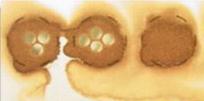

|
|
SERUM RINGS: |
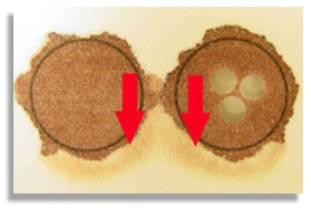
|
|
BLOOD ON OVERLAY COVER: |
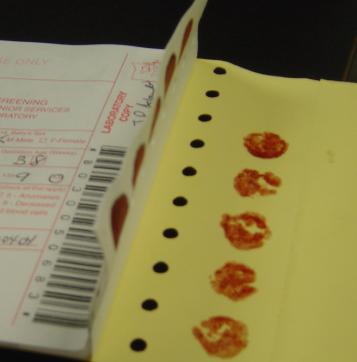
|
|
FILTER AND FORM BARCODES DO NOT MATCH: |
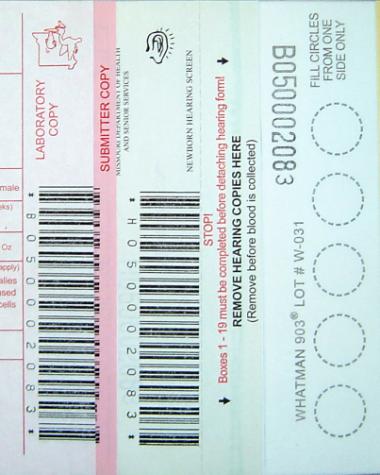
|
|
LABORATORY ACCIDENT: |
|
|
OLD SPECIMEN: |
|
|
NO BLOOD: |
|
|
OLD FORM: |
|
|
DAMAGED SPECIMEN: |
|
|
MISSING OR INCOMPLETE PATIENT INFORMATION: |
|
|
WET SPECIMEN: |
